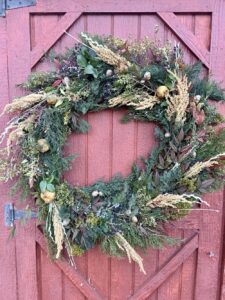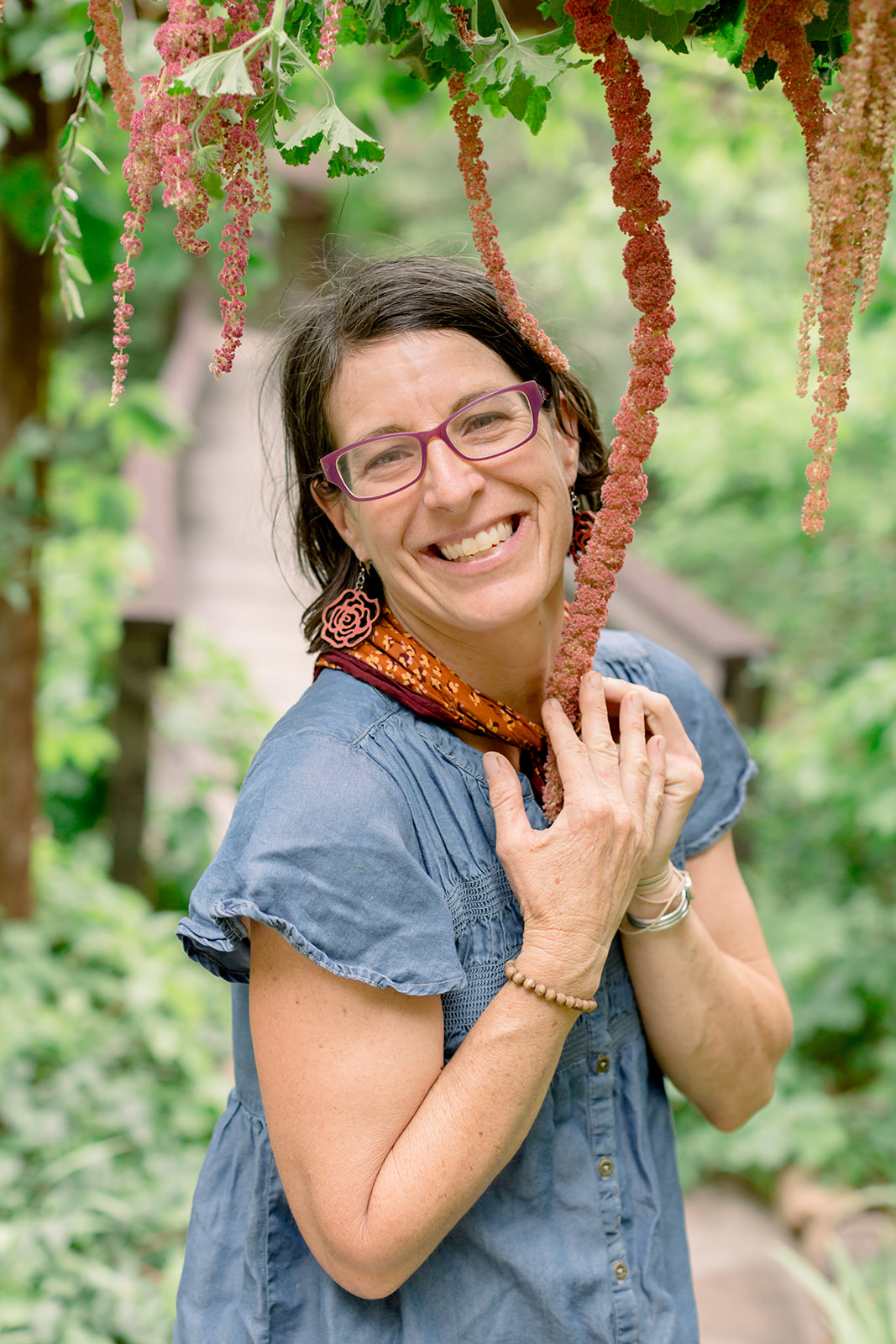Most white women my age do not fear being arrested during a trip to the grocery store. But for a foraging florist like me, the thought has definitely crossed my mind, especially when I notice a police car in the lot. Armed with hand pruners, practicing what I call the art of “civic pruning,” I trim branches and berries to add to my flower designs. I usually pass as a landscaper, dressed in worn work clothes and a straw sun hat with a patina of garden grit. While I am technically taking something that does not belong to me, will tell you how I justify this to myself and to you, dear reader.
Early on in my life as a flower farmer and florist, I encountered the difficulty of sourcing supporting greenery for bouquets. With only a small fraction of my one acre farm in production, it is often not possible to grow enough to make designs like wedding arches, garlands and holiday wreaths. Eucalyptus for example, a common greenery in the floral design industry, is native to Australia. It is grown in the warmer southern states of the U.S., so it must be shipped. I tried cultivating it and it did not survive the winter. But when I discovered a beautiful eucalyptus tree growing down the street, it opened up a new world for me—the local foraging circuit.
It is mind boggling how much greenery must be produced globally to fuel the floral industry. Even more staggering is the energy asked of the earth to produce these stems, not to mention the human labor and the carbon footprint. I question why our dominant culture places a value on the exotic when local substitutions are plentiful. If the world is the floral industries’ garden, I decided to make my neighborhood and the Verde Valley mine. I make it a point to find beauty amidst a sea of pavement and empty lots.
Even the most ubiquitous plants have their moment to shine when they stand out from the crowd of green in blossom or fruit. As a floral forager, I have made it my mission to be on the lookout for these suspects, and when their season arrives, I celebrate them by picking them and putting them in a flower arrangement. I never travel without a pair of hand pruners in the side panel of my car door and therefore never miss an opportunity when a plant calls out, “Pick me!”
At the dentist on the lookout for wreath making elements, the Japanese privets framing the parking had blue waterfalls of berry clusters dripping from their greenery. The antique color appeared as if someone carefully powdered each berry. Next door the heavenly bamboo were fiery exclamation points shouting my name. As days grow cooler the carotenes or carotenoids in the leaves normally masked by the green chlorophyl in the summer turn burnt orange-red. This will be the perfect complement to the blue privet berries in the wreath.
I love finding beauty in the unexpected places that most pass by without notice—dried yucca pods in an empty lot, or plum blossoms in the Whole Foods parking lot. Since this has become a regular practice, I now have relationships with these common gardens. I carefully prune the plants to maximize growth and blooming. I freak out when I find the rosemary that was perfect stem length for centerpieces has been buzz cut into round, ridiculous shapes. Once I returned to find a giant Cleveland Sage from a vacant bank lot torn out. I felt as if I lost a beloved member of my own garden. When pollinated, the seedheads transform into fragrant jewels that I can place into bridal bouquets as a surprise element. The deep lavender blossoms have a pungent sage-y scent that attract copious bees; just standing beside it transported me to a garden universe without traffic and parking lots.
My foraging habit has led me to even discover elegance in weeds. I used to perceive them as ugly; as the offspring of our poor treatment of the land. Through the lens of a floral designer these plants are unique and textural. Stems bearing the immature berries of Silver leaf nightshade add a gray-green accent not unlike a cross between Hypericum (the horticultural version of St. John’s Wort) and Dusty miller (a prized wedding greenery).
Weeds, if harvested responsibly, can make an ecological statement. By placing them alongside ranunculus or dahlias, I challenge the boundaries of what is considered attractive. Author and floral designer Christin Geall coined this “ecological style”, arguing restraint and constraint can lead to creativity and a sense of place. Cutting the nightshade at an unripe stage removes a season of seeds that would otherwise spread, and harvesting the aerial parts removes vigor from the root system. Johnson grass, another invasive weed, has stunning flowering stalks, which can be cut when in bloom (before seed set) to keep them from spreading.
We moved to the small town of Rimrock during the height of the COVID pandemic, so knocking on doors seemed out of the question. Walking the quiet streets, I would admire/covet a Lady Banks rose in the perfect stage of harvest. I met my neighbors by leaving notes in their mailboxes, introducing myself and wondering if they could spare a few branches, always offering flowers in return. Most people actually call me back! I think they are proud that their landscape or yard can contribute to the greater purpose of spreading beauty.
This floral foraging practice attunes me to the seasons in a greater garden in which I live and now take part in tending. I hope that the flower designs I create offer people a new appreciation for how what is common, weedy even, can be beautiful. Maybe they will be on the lookout next time they go to the grocery store and a plant whispers, “Hey, look at me.”


